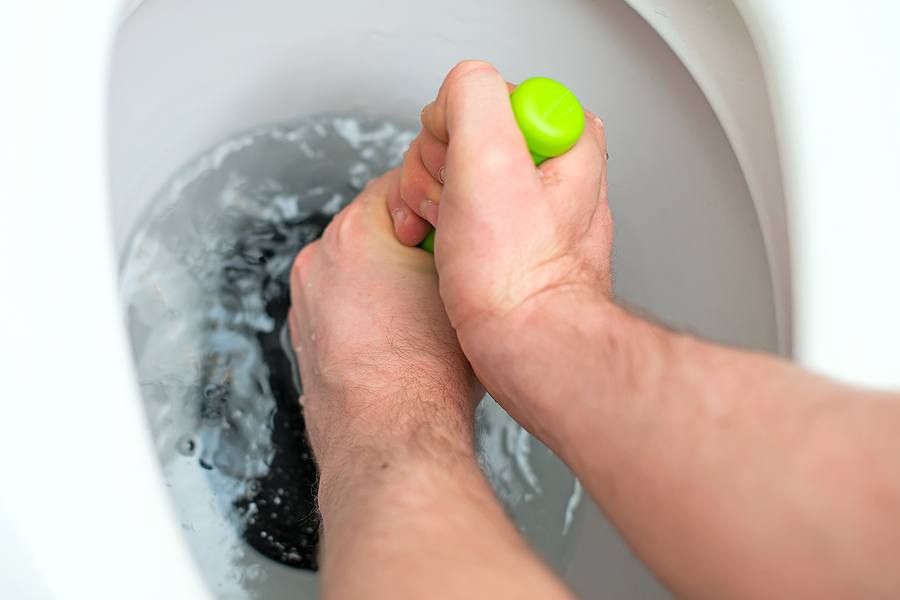Blocked drains are one of the main reasons we get called out to homes across Sydney. Blockages come in all shapes and sizes and might start with a slow-draining sink or a gurgling sound from your toilet. Such symptoms can quickly escalate into serious plumbing problems. Think flooding, property damage, or even raw sewage backing up into your home. Not only are blocked pipes unpleasant and a frustrating inconvenience, but they are also expensive to fix if left too late.
Join us as we break down the most common causes of blocked drains and how to prevent them before they turn into plumbing disasters.
The Top 6 Causes of Blocked Drains
Here are the most common causes of drain blockages.
Tree Roots Invading Pipes
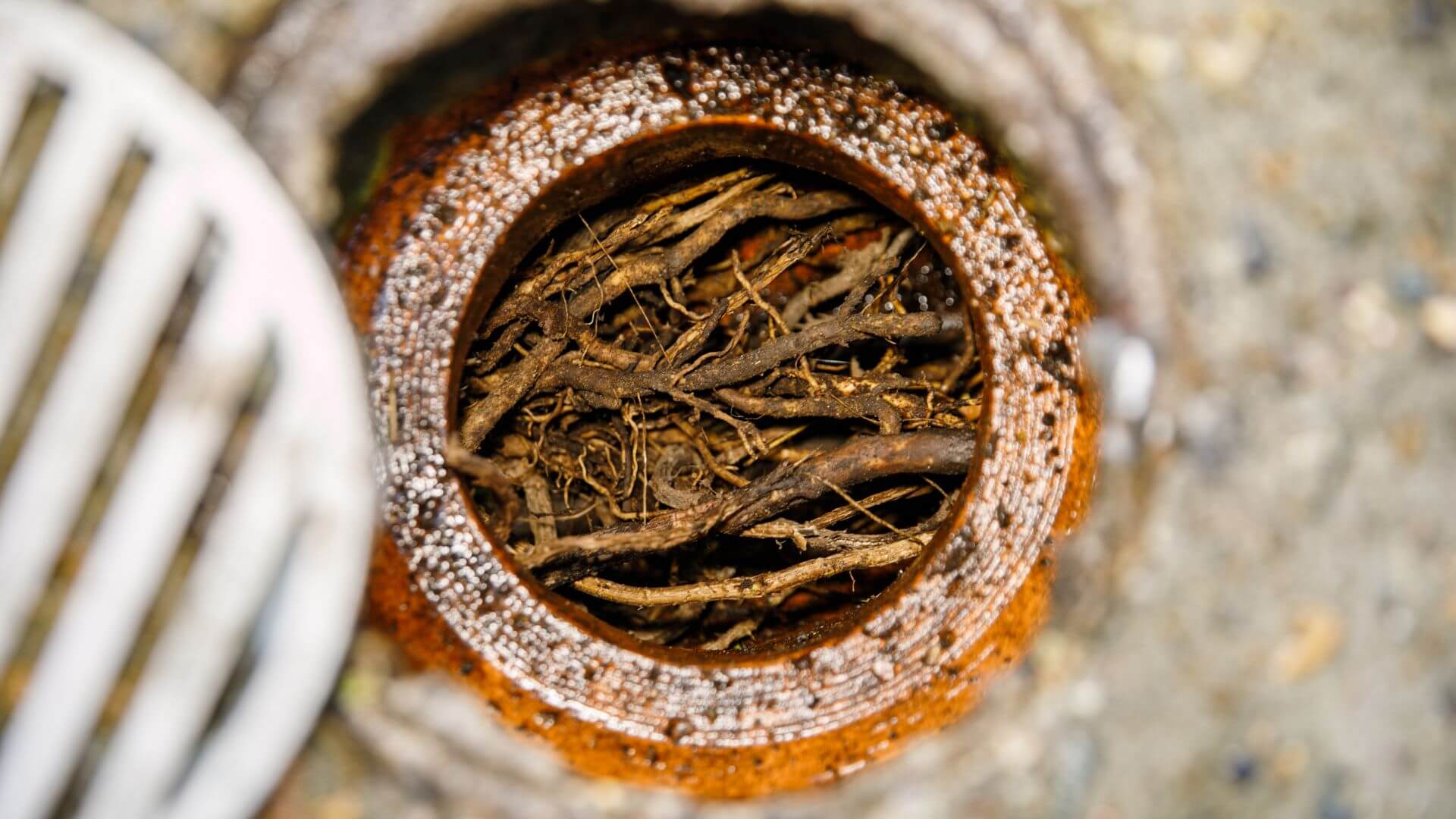
Why It Happens:
Tree roots are responsible for a huge amount of blocked drains in Australia. This happens because tree roots are naturally drawn to moisture and nutrients, both of which are found in your underground pipes. As a result, even the tiniest crack in a pipe can release just enough moisture to attract tree roots—and voilà, they zero in. Once inside, the roots continue to grow, eventually causing serious blockages or damage.
Prevention Tips:
- Avoid planting trees with aggressive root systems near your plumbing.
- Install root barriers between trees and pipes.
- Have a licensed plumber inspect older pipes with CCTV cameras, especially if you live in a leafy suburb.
How to Deal With It:
If roots have already infiltrated your pipes, qualified plumbers have tools and methods such as hydrojetting or mechanical cutting to clear them. For a long-term solution, pipe relining can seal the pipe from the inside, blocking future root intrusion without digging up your yard.
Grease, Fat & Cooking Oil Build-Up
Why It Happens:
Unfortunately, many blockages are our own doing. When hot grease and cooking oil go down the drain, they cool, then solidify, coating the inside of your pipes and eventually creating a clog or “fatberg.”
Prevention Tips:
- Never pour fats or oils down the sink.
- Let grease cool and solidify, then scrape it into the bin.
- Wipe pans with paper towel before washing to catch excess fat.
How to Deal With It:
Try flushing the drain with boiling water and dish soap to dissolve recent buildup. Another handy DIY plumbing trick is baking soda and boiling water down the drain. If the clog persists, a professional plumber can jet the drain to cut through the grease.
Hair and Soap Scum
Why It Happens:
Another cause of our own doing, this time in the bathroom. Hair binds with soap residue to create sticky clumps that catch on the inside of pipes in bathroom drains. Over time, these clumps restrict water flow and lead to slow drainage or full blockages.
Prevention Tips:
- Use drain strainers in the shower and bathroom sink.
- Regularly clean the strainer and remove visible hair.
- Flush the drain with hot water and vinegar every few weeks.
How to Deal With It:
Time to get out your favourite DIY plumbing tool, the plunger and get plunging, or, if you have one, DIY drain snake. If all else fails, a professional inspection and a mechanical cleaning tool is required to fully remove the build-up.
Foreign Objects (Wipes, Toys, Sanitary pads)
Why It Happens:
Toilets and drains aren’t designed to handle anything beyond toilet paper and human waste. Flushing items like wet wipes, nappies, sanitary napkins, or even kids’ toys can quickly cause a serious blockage.
Prevention Tips:
- Only flush toilet paper—nothing else!
- Educate kids and housemates on what not to flush.
- Keep bins in the bathroom for proper disposal.
How to Deal With It:
If you’ve got a full blockage from a foreign object, plunging may help in minor cases. Otherwise, a plumber will likely need to conduct a CCTV drain inspection and remove the item manually or with a mechanical auger.

Broken or Collapsed Pipes
Pipes deteriorate over time, especially in older homes with terracotta or galvanised steel pipes, which were commonly used in Sydney back in the day. Ground movement, corrosion, and tree roots can also contribute to misalignment and complete collapse.
Prevention Tips:
- Schedule pipe inspection if your home was built pre-1980s.
- Replace ageing or brittle pipes with more durable materials like PVC.
- Avoid heavy machinery or vehicles on top of known pipe paths.
How to Deal With It:
Severely damaged pipes are no DIY fix. Your yard may need to be excavated, and pipes replaced. However, if the damage isn’t too advanced, pipe relining is a trenchless, cost-effective repair option that restores the pipe to as good as new.
Poor Pipe Installation or Sloping
Why It Happens:
If your pipes were installed with the wrong slope (either too steep or not steep enough), water and waste won’t flow properly. As a result, you will get build-up and eventual blockages. DIY plumbing, poor workmanship and budget renovations are common culprits when we come out to fix the problem.
Prevention Tips:
- Always use licensed plumbers for any drainage work.
- Ensure compliance with Australian plumbing codes.
- Get new builds or renovations inspected if drainage issues begin soon after.
How to Deal With It:
Diagnosing installation issues requires a professional drain inspection with a camera and gradient assessment. Depending on the severity, you may need to regrade or replace the affected sections of pipe.
Common Blocked Drain Causes In Coastal Homes
If you live near the beach, your home may face additional drainage challenges.
Sand Washed Down Showers & Outdoor Taps
After a beach day, it’s standard practice to rinse off outside or jump straight in the shower, but the sand adds up fast. Over time, it clogs pipes and cause long-term drainage issues.
Salt Air Corrosion of Pipes
That salty ocean breeze might be good for the soul, but not for your plumbing. Salt accelerates the corrosion of metal pipes, which means they are more vulnerable to cracks and blockages.
Wind-Blown Debris into Outdoor Drains
Coastal winds can dump leaves, sand, and rubbish into uncovered stormwater drains. This leads to blockages that are hard to detect until the water becomes visible when it starts pooling where it shouldn’t.
Local Plant Roots Seeking Moisture
Plants in sandy coastal soil work harder to find water and that often means finding it in your pipes. Once inside, roots expand and block the flow.
Flooding from Heavy Rain & High Tides
In low-lying areas, especially near beaches, intense rain or tidal surges and storms can overwhelm drainage systems. This puts pressure on your pipes, and leads to backflow or blocked stormwater systems.
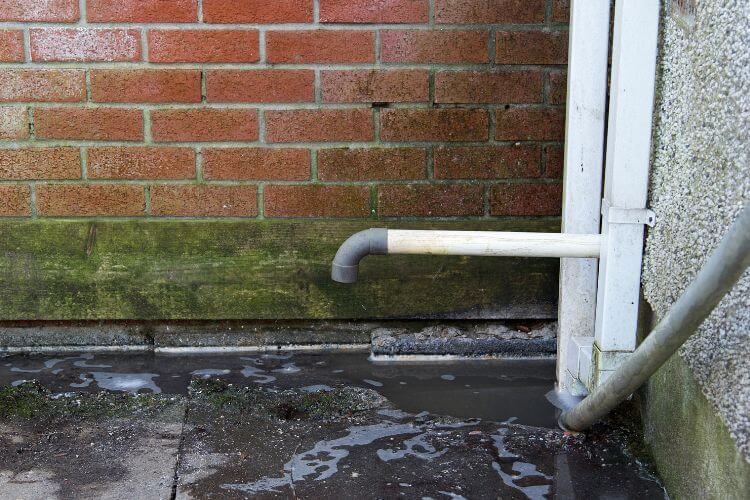
Less Common But Still Serious Causes of a Blocked Drain
We also see some less obvious culprits behind blocked drains. These don’t get as much attention, but can cause just as much hassle if ignored.
Food scraps (e.g. rice, pasta expanding in pipes)
Don’t let food waste go down your kitchen sink. Starchy foods like rice, pasta, and oats can expand when wet and stick to pipe walls, causing slow drainage or complete blockages.
Toilet paper overuse or non-dissolvable types
Even toilet paper can be a problem. If you’re using ultra-thick, non-dissolvable brands or too much at once, it doesn’t always break down as quickly as you’d think and cause a blocked toilet. And remember, no baby wipes down the toilet, ever.
Mineral buildup in hard water areas
In regions with hard water, calcium and magnesium deposits can build up over time inside the drain system, narrowing the diameter and impeding flow.
Structural pipe corrosion (particularly in older homes)
Older homes often have metal or galvanised pipes that may have weakened or cracked over time. Rust flakes can clog the system or lead to pipe collapses.
Stormwater overload or backflow during heavy rains
Heavy rain can overwhelm stormwater drains, particularly if without proper maintenance or if your property sits in a low-lying area.
Improper plumbing venting leading to pressure issues
Without correct venting, your plumbing can’t equalise pressure, causing gurgling drains, slow flushing toilets and poor water flow, and even sewer gas odours.
Leaves and twigs
Outdoor drains can fill with garden dirt and natural debris, which is especially common in leafy regions like the North Shore. If not cleared regularly, this build-up can block stormwater flow and lead to overflow.
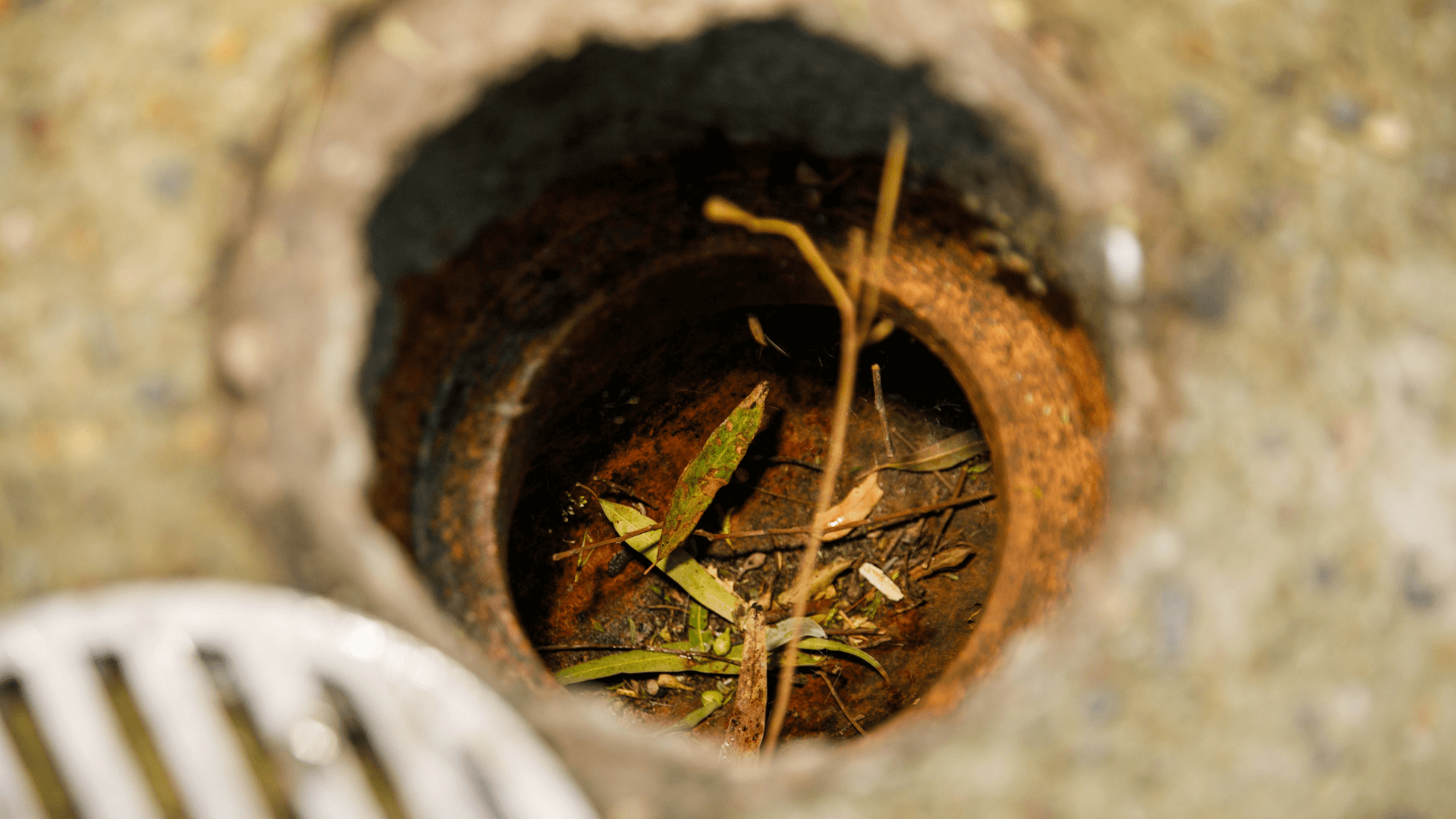
Signs You Might Have a Blocked Drain
So, how do you know if something’s brewing beneath the surface?
Blocked drains often start with subtle signs, those little annoyances that are easy to brush off until they become a full-blown plumbing nightmare.
Slow drainage
That shower water pooling around your feet? It’s not just annoying, it’s your first clue that something’s clogging up the pipes.
Gurgling noises
Hear a strange glug-glug sound after you flush or drain the sink? That’s air trapped in the pipes, often caused by a blockage that requires drain cleaning.
Unpleasant odours
A whiff of something funky coming from the kitchen sink or bathroom? Built-up waste, grease, or stagnant water could be to blame.
Water backing up
The most obvious (and unpleasant) sign—when water starts going the wrong way. If your toilet or sink backs up, it’s time to act fast.
Water pooling around drains
If water lingers around the floor or outdoor drains, it’s a clear sign there’s a backed-up water flow, likely caused by a hidden clog.
Wet patches or damp walls/floors
Dampness with no clear cause? You could have a leaking or backed-up pipe doing sneaky damage behind the scenes.
Unusual lushness in garden over sewer line
A patch of grass growing like it’s on steroids? It might be feasting on nutrients from a leaking sewer pipe.
Repeated clogs in the same drain
If you’re constantly reaching for the plunger in one spot, that’s your drain crying out for a proper inspection.
Overflowing outdoor stormwater drains
Heavy rain shouldn’t flood your backyard. But if it does, your stormwater drain could be blocked with leaves, silt, or worse.
Pest activity (e.g. rats, cockroaches attracted to sewage)
Rodents and roaches love a blocked drain. If they’re making surprise appearances, it might be time to check what’s lurking below.
How to Clear a Blocked Drain

The good news? Not every blocked drain requires an emergency plumber. Depending on the severity, here are some methods you can try, both DIY and professional solutions:
- Boiling water: A simple one to start with—pour boiling water slowly down the drain in stages. It can help break down grease, soap scum, or minor buildup.
- Plunger: Trusty and effective, a plunger uses pressure to dislodge the blockage. Just make sure you have a good seal over the drain and pump hard.
- Natural cleaners: Baking soda and vinegar make a fizzy combo that can help loosen gunk. Pour ½ cup of baking soda, followed by a cup of vinegar. Wait 15 minutes, then flush with hot water.
- Drain snake (or plumber’s auger): This tool physically breaks up or pulls out whatever’s clogging the drain. Great for hair and other solid obstructions.
- Hydro jetting: When you need something stronger, professionals use high-pressure water jets to blast through tougher clogs like grease, tree roots, or compacted debris.
- Pipe Relining: For recurring blockages or damaged pipes, pipe relining offers a long-term fix. It creates a new internal pipe layer, restoring flow and preventing future issues. And no digging is required!
Why Drains Get Blocked So Often in Australian Homes
Blocked drains are surprisingly common in Australian homes thanks to a mix of tree-lined suburbs, ageing pipe infrastructure, and habits like pouring grease down the sink. In places like leafy Sydney, thirsty tree roots sneak into small pipe cracks, while coastal homes face salt corrosion and sand buildup. These factors combined mean regular blockages are more common than you’d think and are the most common callouts we get.
How to Prevent Blocked Drains in the Future
We’ve already covered most of these dos and don’ts, but they’re worth repeating:
- Don’t flush wipes or pour oil down the sink.
- Install strainers in sinks and showers to catch debris.
- Install grease traps for kitchens (especially if you cook often).
- Regularly flush drains with hot water.
- Book occasional drain inspections to catch small issues early.
A little drain maintenance goes a long way toward avoiding costly plumbing dramas.
When to Call a Professional Plumber
If DIY methods aren’t cutting it, it’s time to call in a pro. CCTV drain inspections, and hydro jetting can quickly identify and clear major issues. For urgent situations, emergency plumbing services are also available to prevent damage from escalating.
Our Blocked Drain Services
At The Relining Company, we offer expert diagnostics, CCTV inspections, high-pressure jetting, and trenchless pipe relining (no digging), all tailored for Sydney homes. Fast, local, and mess-free.
Why Choose a Relining Expert Over a General Plumber?
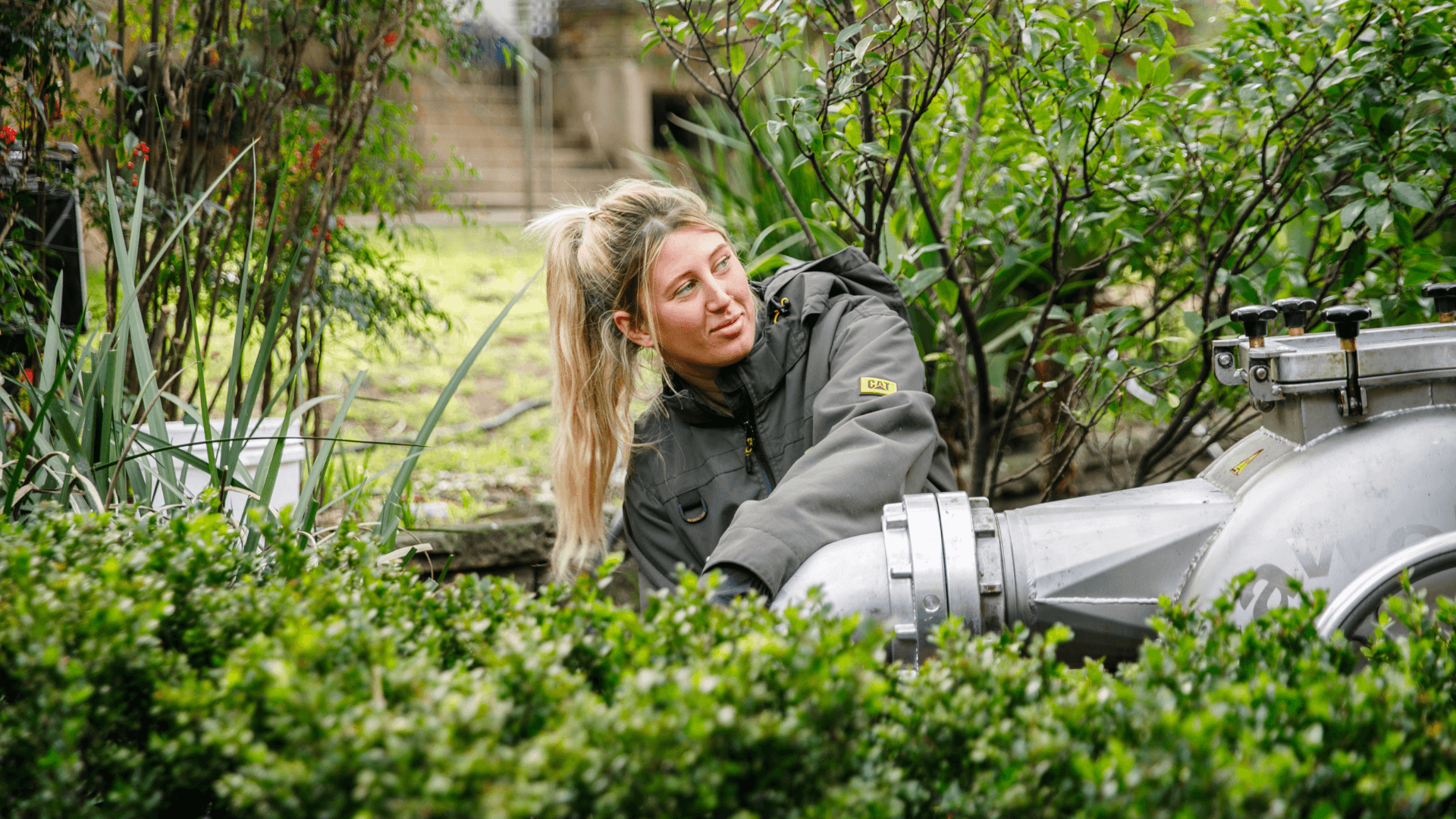
When it comes to stubborn or recurring blocked drains, a general plumber may only offer a quick fix. At The Relining Company, we specialise in long-term solutions using cutting-edge tech like trenchless relining and high-resolution drain cameras. Our methods are less invasive, more cost-effective, and designed to prevent future problems.
Ready to clear the problem for good?
Contact us today for a free consultation or to book a blocked drain inspection with Sydney’s relining experts.
FAQs About Blocked Drains
Can hot water fix a blocked drain?
Hot water can help dissolve grease and minor buildups, especially in kitchen sinks or showers where food residue or coffee grounds may be the culprit. For more serious blockages, hot water alone usually won’t be enough.
How much does it cost to unblock a drain?
Costs vary based on severity, but standard drain unblocking in Australia typically ranges from $150 to $500.
Is it safe to use chemical drain cleaners?
It’s not always safe to use chemical drain cleaners as they can damage pipes over time and pose health risks, especially in older plumbing.
How often should drains be cleaned?
Drains should be cleaned once a year for maintenance, or more often if you experience frequent blockages.
What do plumbers use to unclog drains?
Plumbers use tools like plungers, drain augers, drain snakes, CCTV cameras, hydro jetting, and trenchless relining systems to unclog drains.
How to unblock a badly blocked drain?
Severe blockages often require professional tools like a hydro jet or CCTV-guided inspection—call a licensed plumber.
Back to Top